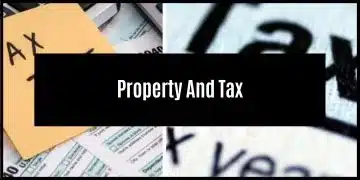You’ll need money for your child’s education
The cost of a child’s education has been on the increase over the last 20 years. The upward trend tends to increase with inflation (CPI) +2% for education fees. A recent study by Old Mutual revealed that at the current trend, the cost of education in 2035 will be as follows:
- Public Primary or High School: R149 800
- Private Primary School: R366 700
- Private High School: R588 800
- University: R254 700
According to Sanlam, more than 51% of youth aged 18-24 claimed that they did not have the financial means to pay for their tuition. With these crazy numbers in mind, we need to consider what we can do today to start saving for your child’s future tomorrow.
But where do we start? We first need to define the goal. We need this portion of money for either school fees or university fees. Once we’ve established the time we have until we need the money, we can plan accordingly.
How much do I need to save?
Calculating how much your child needs can be complex – but saving more is always better than not saving at all. With the above estimates, you could say you need a small fortune for education. Yet, you can use compounding and savvy investments to favour your financial position.

Old Mutual did a cool calculator here that assists you in calculating how much you need. I do however want to mention the following assumptions:
- Rather play it safe with inflation +2% minimum
- Calculate on a 4-year degree – it could be less or more
- Don’t assume that the degree is the only costs – you will need to pay for books, extra classes and other costs.
What are my investment options?
Our investment options analysis is similar to risk analysis for investing. Our lives, age, risk profile and financial habits have a huge impact on choosing the right vehicle for our child’s educational investment.
For tax purposes, it might be more profitable to invest in your child’s name, rather than your own. Keep that calculator handy!
Education policy
Many investment companies have products specifically for saving for education. Other options include doing it yourself.
Companies such as Sanlam, Old Mutual and Standard bank offer education policies and savings funds.
One type of policy, such as the FutureInvest 4 Education policy requires you to pay a monthly amount for the chosen number of years. If you lose your job and cannot pay, then penalties will be payable. This means they will take some of the money you’ve saved to pay as a ‘fine’ for not completing the term. In some cases, there might be exclusions such as if your child gets a bursary, the policy will not pay out anything.
Most insurance policies will not give you early access to your funds, or levy a huge penalty if you do need to. The idea is to lock you in so that you save towards the goal. If you have problems with self control and spending money that was meant for something else, then this might be a good idea!
Tax free savings account (TFSA)
If you’re able to max out your TFSA and also save for education, that would be amazing! But most people don’t have the financial means to do both.
In the case that you want to save for education in your child’s TFSA, the money will be taken from their lifetime limit. This means they will not be able to re-deposit that money in their TFSA for retirement. Thus, if they earn a fortune from their education, you will penalise their tax benefits in the long run.
Also note that when your child is 18, he will legally have access to the money and can spend it on whatever he wants. I hope you’ll be raising your kids well!
ETFs and unit trusts
If you’re looking for long term compounding, investing in riskier assets such as stocks could make sense. Well-diversified ETFs allow for exposure to different sectors and industries.
Dividends tax and capital gains tax (CGT) will be payable on all profits.
For more info, check here.
Money market and bank accounts
We know from the study above that education increases by more than inflation. Therefore, it makes sense to put your money in something that will grow with inflation plus a bit more.

Most of the money market and savings accounts offered by banks offer inflation-related increases only.
Make sure to ask them about fees, whether your money is guaranteed and check how the interest rate changes your investment returns.
Who should own the investment?
Deciding to put the investment in your own or your child’s name is a difficult choice.
Imagine your child turns 18 and cashes out his entire life savings (including education savings) to travel to Europe. If you decide to put the investment in your child’s name, less tax will be payable, given that you’re in a higher tax bracket.
On the other hand, if you invest all the money in your own name, you will be held liable for all the tax payable at your own tax rate.
Conclusion
Saving for a child for education is important. Whether you want to invest in an education policy, TFSA, ETF/Unit trust or an alternative investment type – make sure you start early.
Make it a priority to save for your child’s future.
Let compounding do its work.
Happy investing
Extra reading
- LocalMoney – A Basic Guide to Investing in Exchange Traded Funds (ETFs) in South Africa
- LocalMoney – The Tax free savings account (TFSA)



